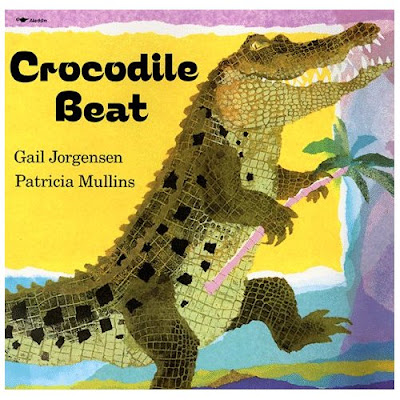
A beautifully illustrated version of Robert Louis Stevenson's poem, My Shadow by Glenna Lang. The pictures show a young girl's travels through a dream night scape with her shadow companion. I like this book obviously because of the poem but also because the illustrations, even though they are acrylic paintings, look so much like the effect you get with silk screen printing. Flat areas of colour with no shading. The illustrations also have been criticized because of their flatness and muddling of the concept of shadow casting. I have used it to help show what silkscreen prints can look like and also as a starting point for collage, using coloured papers. I don't know of any picture books illustrations that employ silkscreen as a medium so if you know of one I'd appreciate hearing about it.
Activities:
1. Share the book. Discuss the pictures in terms of media and style. Can you identify shadows? What causes shadows?
2. Identify the features of the pictures in that they are flat areas of colour that fit together. There is no shading to suggest form. Most children will probably determine they were painted.
3. Offer the coloured paper as collage to create images or introduce the silkscreen process to create images that have flat areas of colour and shapes that fit together.
4. Children obviously need prior experience with the silk screen technique and have experimented with it beforehand. A good way of doing this is to use torn paper stencils with the silkscreen and repeated printing with different colours.




